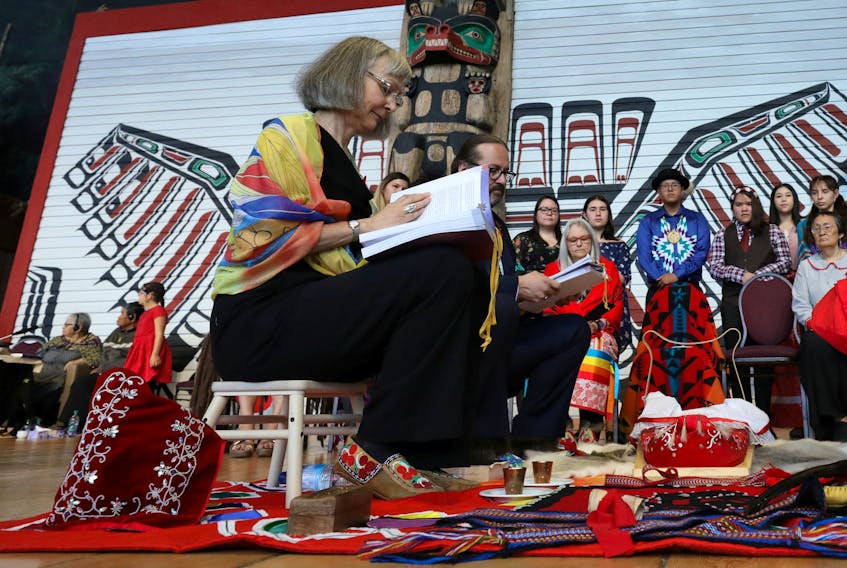ST. JOHN'S, N.L. — When it comes to the conclusions of the inquiry report into missing and murdered Indigenous women in Canada, Michelene Gray is onside.
“I definitely agree, especially when you look at it from the colonialization perspective,” said Gray, the executive director of the Labrador West Status of Women Council.
The report, officially released in Ottawa Monday, calls the pattern of missing and murdered Indigenous women a Canadian genocide.
The national inquiry into missing and murdered Indigenous women, girls and two-spirited lesbian, gay, bisexual, transgendered, queer/questioning, intersex, asexual (2SLGBTQQIA) people released its final report “Reclaiming Power and Place,” based on testimony from more than 2,000 family members, survivors of violence and experts. There are 231 individual calls for action directed at governments, institutions, industries and Canadians.
The commission concluded: “The significant, persistent, and deliberate pattern of systemic racial and gendered human rights and Indigenous rights violations and abuses – perpetuated historically and maintained today by the Canadian state, designed to displace Indigenous Peoples from their land, social structures, and governance and to eradicate their existence as
Nations, communities, families, and individuals – is the cause of the disappearances, murders, and violence experienced by Indigenous women, girls and 2SLGBTQQIA people, and is genocide.”
Among the recommendations are a national action plan, a national Indigenous and human rights ombudsperson, and a national Indigenous and human rights tribunal.
Gray said all governments should have such an action plan so that the basic rights guarantee safety, health, justice, employment and housing and culture for Indigenous women.
“Absolutely, the more voices we get together … this is definitely a great call for justice,” Gray said. “This report is definitely the source that could resonate change and support for Indigenous women and girls.”
“This report is definitely the source that could resonate change and support for Indigenous women and girls.” — Michelene Gray
Gray noted Indigenous women and girls are several times more likely to be victims of homicide than non-Indigenous women.
“And the history of violence against Indigenous people goes back a long way,” she said.
The report notes that Canada has signed on to many international declarations and treaties that affect Indigenous women’s, girls’ and 2SLGBTQQIA people’s rights, protection, security, and safety, but there is no accessible and reliable mechanism for them to seek recourse.
“The Canadian legal system fails to hold the state and state actors accountable for their failure to meet domestic and international human rights and Indigenous rights obligations,” the report said.
“When the unthinkable happens and First Nations, Métis and Inuit families become concerned that their loved one may be missing or in danger of violence, they are faced with a difficult dilemma: to seek help in finding that loved one requires reaching out to institutions – the police and the criminal justice system – that have historically ignored and continue to ignore their concerns. More than that, they are forced to reach out to institutions that are directly at the heart of significant pain, division, cultural destruction, and trauma experienced in their family and perhaps by the loved one they seek help in finding. In some cases, they are forced to reach out to the very people who have perpetrated acts of physical and sexual violence against them or their loved ones.”
RELATED









